The other day, I was looking at some old pictures of my grandfather. He was one of the early pioneers who started a homestead on the Canadian prairies. Wow, it was a hard life for those early pioneers!
Things were certainly different in those days. It is difficult to see how they managed to survive.
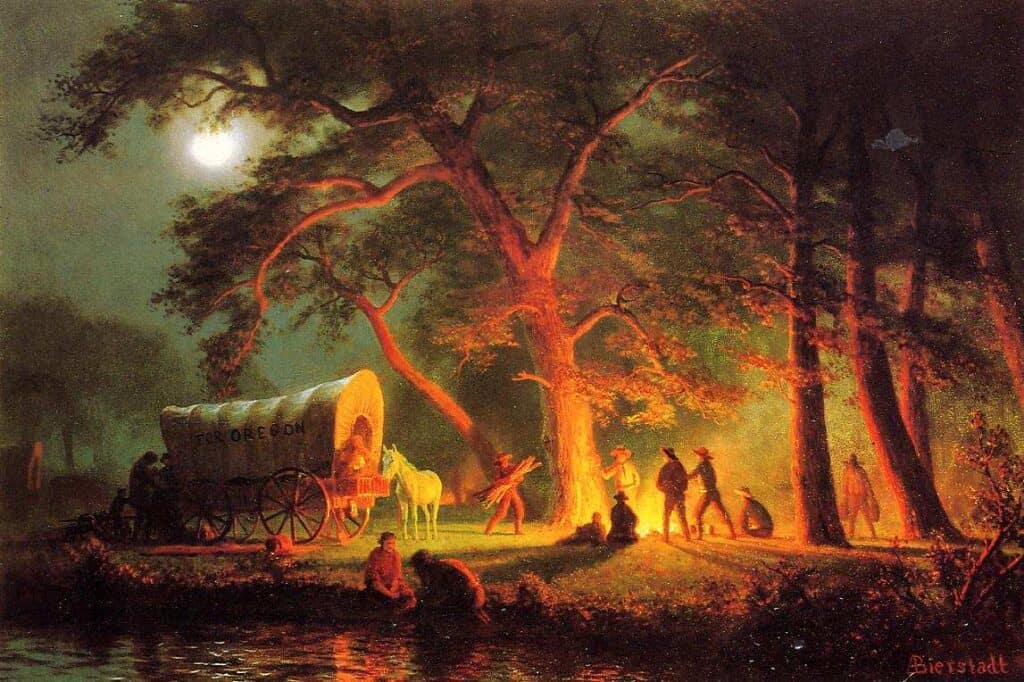
However, when I started to think about it, the pioneer’s life, in many ways, was like what we consider the homesteaders of today. It was their determination and the fact that they had a huge number of skills that allowed them to succeed.
The pioneers wanted to create a different life for themselves and their families, and were prepared to go to the other side of the world for the opportunity to do so.
Similarly, today’s homesteaders are also looking to escape from the run-of-the-mill 9 to 5. There is a desire to enjoy a more natural existence – a natural existence and self-sufficiency that relies on their hard work.
They embrace the choice to use natural products rather than those that are made with all sorts of harmful chemicals. They want to reduce their carbon footprint.
Comparing the pioneer lifestyle to that of the homesteaders of today, it’s easy to see that many of the pioneer skills below are just as super-useful now as they were back then.
So, what pioneer skills might those be? Let’s take a closer look.
1. Organizational Skills
Without a doubt, one of the most important pioneer skills is that of being able to organize effectively.
Think of the pioneers who had to pack up and transport everything they needed for thousands of miles – all to set up a homestead from scratch.
To achieve this, it would be necessary for them to take some time to think about what they were going to do when they reached their destination. This would enable them to plan what they needed to take with them.
When they reached their destination, it would have been vital to organize exactly what needed to be done to build their homesteads.
The ability to organize and create an effective plan of action is the key to making anything worthwhile happen. Organizational skills are necessary for successful homesteading today just as they were back then.
2. Growing Food
Once the pioneers had built their houses or at least some form of shelter, they would have needed to start growing food.
It would have been unlikely that the land where they settled was ready for planting. So, it would take a great deal of work and skill to make it productive as soon as possible.
The pioneer lifestyle was such that they needed to grow enough food to be able to live all year round. This required several skills, since what works for one plant will not necessarily work for others. Growing potatoes is nothing like growing lettuce. While growing food seems simple in theory, it’s actually somewhat extensive.
3. Seed Saving Skills
There was no Burpee’s or Gurney’s back in the day! The pioneers would have had to save all of their seeds to use for next year’s crops.
They might have enough seed for possibly one or two seasons of crop growth but after that, they would need to find more seeds to grow more crops.
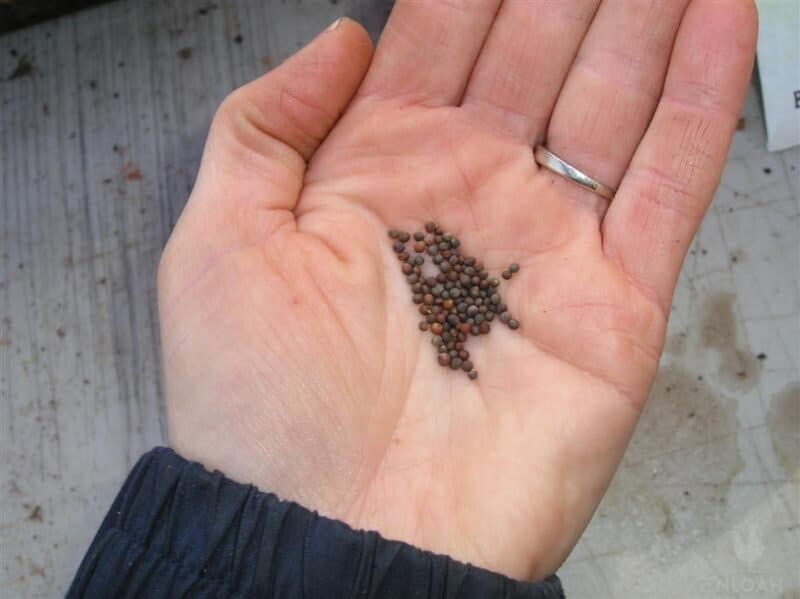
The best way to overcome this would have been to collect seeds from the plants that have already been grown. This sounds easy; however, nature is remarkably diverse.
Plants develop seeds in different ways. They all need different methods of collection and often different methods of saving.
It would take a great deal of skill to know how to deal with all the different plants that they were growing.
4. Starting and Manage an Orchard
To be able to grow fruit, the pioneers needed to set up an area of land that they could set aside as an orchard.
Creating an orchard takes a great deal of skill. I say future with since some trees can take several years before they start to produce fruit.
The pioneers would have taken cuttings and seeds with them to be able to set the orchard up. Setting up an orchard wasn’t easy, they had to figure out a lot of things such as:
- Location
- Amount of land to allocate
- Soil suitability
- How close to plant the trees to each other
- How much water to give them, and when
Failure to use these and many more skills correctly could result in poor or possibly no crops. Crop failure could take several years to recover from.
5. Composting
Growing anything successfully requires good soil. Some pioneers would have been fortunate to have good soil that was suitable for growing food.
Unless constant attention is taken to improving and keeping soil vibrant, it soon becomes nutrient-starved. A nutrient-starved soil can prove disastrous.
Nutrient starved soil at best will grow poor quality low levels of crops. Overworking and destroying the nutrients can result in the structure of the soil completely changing so that it will not produce good crops.
Most people will remember what happened in Oklahoma in the 1930s when during drought the exposed overused topsoil turned to dust and was carried away by the heavy spring winds.
Composting is the best natural method to ensure that the correct pH values and vital nutrients are keeping the soil fertile.
6. Raising and Caring for Livestock
Raising livestock is difficult work that requires a fair amount of skill. However, the many benefits to the pioneer would have made this activity worthwhile. Animals that were raised back in these days were useful in so many ways.
Livestock could be raised not just for meat, but also for work. Draft animals like horses, mules, donkeys, and oxen would have been the workhorses of the pioneers – after all, there were no tractors.
They were also a means of transport as they could pull wagons, helping to do much of the heavy work around the farm. Not only that, these animals could be used to help plow the land, transport logs, and remove tree stumps.
Even dogs could be used to herd and hunt animals. They could also be used to protect families and property, since they have a tendency to be territorial.
Cats of the pioneer days were not the pampered, preened animals that they are today. They were only fed in the deep of winter, instead catching their own food the rest of the year. They were excellent at helping to keep the rodent population down.
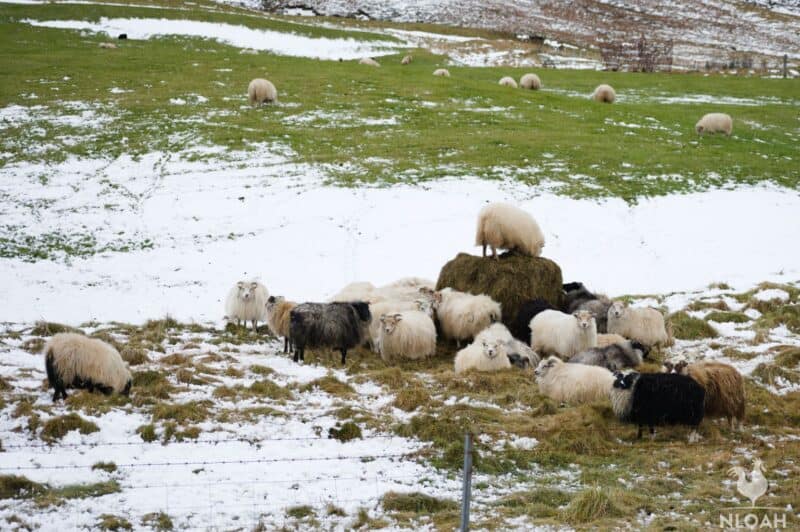
Sheep could be kept for the wool that they provided. As a bonus, they could also be eaten and milked.
Hogs, cattle, chickens, turkeys, and rabbits were also kept since they could be used to supply food as well as other products like butter, cheese, milk, eggs, and fat for soap making and other crafts.
All of these animals would require different skills and expertise to be raised. However, as you can see, they give a lot back in return.
Looking after and caring for these animals to keep them both healthy and productive is an important skill – it was for the pioneers and it is for modern-day homesteaders as well.
Some animals can do well to mostly take care of themselves, but that’s not always the case. Horses, for instance, require a fair amount of care to keep them strong.
7. Hunting and Fishing Skills
While raising livestock would have been the primary way that the pioneers fed their families, they often had to supplement their food supply by hunting and fishing. For those that lived in areas that had access to lakes or rivers, having good fishing skills would have been particularly important.
Many of the pioneers learned their hunting and fishing skills from the Native Americans, who showed the first pioneers how to fish by using spears on the bank of a river or from a boat on the lake. They also taught them how to cut holes in the ice to catch fish.
The legendary tracking, hunting, and trapping skills of the original Native American tribes would have been passed on to the pioneers as it would allow them to hunt for deer, elk, and moose.
8. Food Preservation
Producing enough food to last an entire year would have been one thing, but getting it to last that long would have been another entirely.
The pioneers needed to know how to butcher an animal to produce plenty of meat, but this meat would not have remained edible for long without some sort of preservation. The only way to make a food stock last would have been to use preservation techniques.
The pioneers developed many useful preservation skills by combining their existing knowledge with the techniques used by Native Americans.
There are all kinds of techniques that they would have used, like smoking, drying, and making conserves. These often were able to extend the life of a food product for up to a year.
9. Building a Root Cellar
To be able to keep food cool longer a root cellar would have been a necessity. A root cellar uses the natural cooling and more stable temperatures that can be found once you dig underground.
A root cellar can help keep certain vegetables and other preserved foods fresh for up to a year. With a limited growing season in most places, a root cellar would have been important to help stretch a food supply long after the rowing season had ended.
As you might expect, there is considerable skill involved in building a root cellar. The pioneers would have had to know how to find the best location and use the right construction techniques to make sure their root cellars were effective.
10. Fire-Starting
Fire would have been essential to the pioneers as they had no access to electricity or other power sources. A fire was their only means of keeping warm and cooking food. In some colder climates, it was essential to keep them alive.
Lighting a fire sounds as if it is a simple task, but nothing could be further from the truth. To start a fire and support it requires the magic triangle of oxygen, heat, and flammable material.
The pioneers would have used many methods to light a fire. Flint struck against steel produce sparks, while wood rubbed together produces heat, and eventually a spark.
An early form of the match was available, but it was not dependable. The match had to be kept completely dry, and it would occasionally explode when struck. Little wonder they used to call them “Lucifers”!
11. Firewood Processing
We have said that lighting a fire is essential. Wood is the most important resource for lighting a fire to be able to cook and keep warm.
Not all wood is the same. Some burn and produce more heat and less smoke while lasting a long time. Other woods burn faster, create a lot of smoke, and do not produce much heat. Consequently, the skill of selecting the best wood was important.
Felling trees is also a skillful task. Using the wrong techniques can result in personal injury or death.
When trees were fell, they had to be cut into a size that made them easy to handle, and to add to the fire. The wood also needed to season and dry out before it could become an effective fuel.
12. Cooking Over an Open Fire
Open flame cooking conjures up romantic imagery of campfire food under the stars. Romance aside, cooking wasn’t that easy to do back then, especially when you consider that it would have been mostly carried out over an open fire at one end of a single-roomed log cabin.
The fire needs to be of sufficient intensity or temperature to cook the food. If the temperature is not right, the food will either not cook, or it will burn.
Cooking over an open fire was quite a simple affair since the pioneers would have used a few wooden utensils. An iron skillet would have been used to cook meats. A Dutch oven or pot would have been to cook stews and soups and of course bread.
A coffee pot or a tea kettle was another popular tool that would have been used by the pioneers.
13. Storing Dried Herbs and Spices
Herbs and spices are essential products that have been used in food preparation for centuries. The pioneers also would have used these herbs and spices in medicine.
Many of these medicinal skills were learned from the Native Americans who used a wide range of herbs.
Mint was used by the Cherokees in cooking, and for making tea. It was an enjoyable drink that also helped with digestive problems. This is just one example of how beneficial storing dried herbs and spices would have been to the pioneers.
14. Cooking Food From Scratch
Daily life for the pioneers was completely different from that of many in today’s people living in a consumerist society. Without the modern luxuries of processed and pre-prepared food, they were forced to use the skill of cooking from scratch.
The pioneer diet had basic items such as potatoes, vegetables, soda biscuits, cornbread, cornmeal mush beans, and rice. Bacon and whatever meat or fish (either fresh or smoked) were also be staples, depending on the time of year and what was available.
Many of the meals would have been those that could be cooked all in one pot as a stew or chunky soup.
Many types of bread were cooked either in Dutch ovens, or consisted of flatbreads cooked on a skillet.
15. Seasonal Meal Planning
For anyone that grows most of their food, it’s essential to be able to plan meals based on the season to ensure that all resources are utilized to the best of your ability. Wherever possible, the pioneers would prefer to eat fresh food cooked from scratch.
This is difficult when foods are only grown at certain times of the year. In the modern store, it is possible to find strawberries at any time of the year.
That is because food is now trucked and transported worldwide. The pioneers only had their resources or those of neighbors that they could trade with.
Meal planning skills would have made it easier for the pioneers to know which foods (and how much) needed to be grown, hunted, raised, or produced for the upcoming year as well as how much needed to be preserved.
It would also help them use up all of their food stock without anything going to waste.
16. Home Brewing Skills
Brewing is an important skill since it allows water that is not palatable to be transformed into an enjoyable drink that is safe. The pioneers would have already had brewing skills that would have only been enhanced by the Native Americans’ brewing skills.
Cider and vinegar would have been brewed as these are useful in food preservation and making cleaning materials.
Beer has quite a legacy among the pioneers and even earlier – in fact, it has been said that parts of the Declaration of Independence were written by Thomas Jefferson in a Philadelphia tavern.
George Washington ensured that his continental army was allocated a quart of beer within their daily rations.
17. Beekeeping
Natural honey should be in anyone’s kitchen cupboard. Honey is an excellent, nutrient-dense sweetener for cooking but also has many benefits. The bees themselves are also an important tool for pollinating crops.
Wild honey was collected from trees that the bees had colonized. The pioneers had no sophisticated equipment – roughly made boxes or even straw hives were both used.
Despite this basic equipment, they were still able to use harvest the honey that they often infused with molasses or roasted tree nuts for extra flavor (and to stretch the honey out to more uses).
18. Milk Production
Milk is an important dietary requirement that was mostly obtained from cattle and goats. Occasionally, sheep would have been raised for milk, too.
These animals will not produce milk automatically. It takes skill to ensure that these animals are kept in the correct environment and have sufficient food.
Of course, an animal also has to be bred and deliver a calf, kid, or lamb in order to come into milk, too – so skills in breeding and rearing young animals would also have been necessary.
Not only that, but the actual process of collecting the milk is also complex and takes considerable skills.
Without equipment, the milk collection would have been undertaken by hand. With most pioneers milking animals into buckets, this would have been a difficult, awkward process that took some considerable skill.
19. Making Dairy Products
With a good supply of milk, it is possible to produce cheese and butter, both important items for any kitchen store cupboard. That’s especially true when you consider that some hard cheeses would have lasted much longer without refrigeration than unprocessed milk would have.
To make butter, milk was allowed to settle so that the cream would float on the surface. The cream would be put into barrels that could be turned to agitate the cream. Eventually, it would be churned into butter. This time-consuming process was often undertaken by children.
The pioneers were ingenious and skillful. When they were on the long trail to their intended homestead, they would put the cream in barrels and attach them underneath their wagons.
The movement on the trail would turn the cream into butter, helping them double up on their efficiency!
20. Butchering
Protein is also an important macronutrient, especially for those that require extra energy for hard manual work. Pioneers kept a range of animals and hunted wild game to be able to supply sufficient amounts protein.
To be able to use the meat from these animals as a sustainable long-term supply of protein, they had to be proficient butchers.
While a smaller animal (such as a chicken or a rabbit) may be a relatively easy animal to butcher, a larger animal would have been more complex.
It can be dangerous to eat meat from an animal that hasn’t been butchered correctly, since there are parts of the internal organs that hold substances that should not be eaten (such as bile from the liver).
Since meat of different parts of an animal requires different cooking methods, if an animal is not butchered correctly it could also result in significant waste.
Pioneers needed to butcher an animal correctly to be able to use all its parts. The skin could be used for leather clothing and shoes, while the fat was used for candle making, cooking, and making cleaning materials.
Bones were useful for making tools and soil improvers. In many cases, the bones were also boiled down into nutrient-dense, ultra-nourishing bone broth, too.
21. Foraging
Native Americans were experts at finding natural-growing plants that were good to eat. Foraging was a way of life and an important way for them to supplement their food stores.
Many plants that grow naturally have many uses besides just eating them. Many could be used to create medicines in addition to personal care products.
A skilled forager will be able to read the signs of the land that will lead them to the correct plants. The skill of identifying natural growing plants is also important since many have poisonous look-alikes.
The pioneers would have learned these important skills from the Native Americans.
22. Weather Forecasting
Weather forecasting was an essential skill for the pioneers. The skill of reading and recognizing natural signals to predict weather changes was critical in day-to-day life. The ability to identify cloud types and understand their significance to weather patterns is a key skill.
Crop harvesting opportunities can be missed if the weather is poorly predicted, leading to complete destruction of the crops.
Bad weather can often frighten some animals, causing them to panic and potentially injure themselves. Being able to spot the signs of bad weather would enable them to move certain animals to safety ahead of a storm.
23. Making Herbal Remedies
When they became ill, the pioneers had extremely limited access to medicine, so minor health issues could develop into more serious, life-threatening conditions. The skill of using naturally growing plants and herbs could help to alleviate this concern.
Natural remedies are often as efficient and are more satisfying to use rather than synthetic products.
A plant such as Aloe Vera has within its leaves a gel that offers skin-soothing and moisturizing properties. It can be used to soothe burns and can be used to help with oral hygiene. It can also be used in shampoos and even as a healthy drink that helps the digestive system.
24. Using Charcoal
Burning wood creates charcoal. This is one of those simple products that has a multitude of uses.
Charcoal can be used (among many other things) to:
- Purify water
- Improve soil
- Make gunpowder
- Make cleaning products
- Medicinal uses
25. DIY Cleaning Products
Without stores on every corner, the pioneers were forced to make their cleaning materials, soaps, and personal care products. Using plants found in the wilderness and other products, they were able to skillfully create just about everything they needed.
To many, this might sound a bit of a chore. However, many of the products that were skillfully made were of better quality than our present-day ones. They also, without a doubt, did not have many of the modern harmful chemicals.
26. Candle Making
Electricity was not available to the pioneers. If they wanted light at night, the best way was to use candles.
They made candles by melting a waxy material, which was usually tallow or beeswax, in a large kettle that was full of boiling hot water. When the tallow had melted, it would be skimmed and put in another pot for the wick to be dipped.
27. Tanning
The pioneers were fortunate that there was an abundance of animals running wild that they were able to hunt for meat. They could also use the skin to make durable clothes, but tanning hides, like many other chores, was pretty exhausting.
Deerskins were one of the most popular for clothes production since when tanned the skin was durable and soft. Tanning was influenced by the Native Americans who built these skills over generations.
Animal skins were very much in demand, so these tanning skills would have given the pioneers a product that they could easily sell to traders or use to barter with other pioneers.
28. Weaving
Weaving can enable anyone to produce high-quality fabrics to create blankets, bedding, and clothes. This was an important skill for the pioneers as it enabled them to produce strong work clothes and warm bedding for the whole family at truly little cost.
By raising just a few sheep and knowing how to weave, a pioneer could make all the clothes that she and her family needed to get through the year.
Weaving skills could also be used to produce other items out of different materials, such as baskets for carrying and storing items as well as things like fishing and animal cages.
29. Knitting and Crocheting
Knitting and crocheting allowed the pioneers to produce warm clothing from the many natural products that were available to them.
They took pride in making these items that were often extremely intricate, and took a great deal of time and patience to create.
30. Digging a Well
The pioneers understood that a homestead without water was destined to fail. For most, water is not visible on the surface – not everyone has a pond readily available. Instead, it would have been necessary to find it and then be able to access it.
It sounds simple – just find the water and drill a well. Unfortunately, it is rarely that simple. A great deal of skill is needed to find the water and even more skills are needed to drill and create a well that functions properly.
Some wells could be as deep as 100 feet, and were made from stone, wood, and bricks that were set with a primitive type of mortar.
A huge amount of work was needed to construct these important wells and remember – if they got it all wrong, they would end up with no water.
31. Repurposing and Recycling
The pioneers, having to rely very much on their resources, could be considered the ultimate repurposing experts. It was essential to be able to create things from whatever they had available.
Wasting valuable materials was not an option. If something could be recycled and used again, the skills of the pioneer were what made it happen.
Most pioneers would develop an extensive store of materials derived from unused items and other materials that they found lying around. There was no such thing as a landfill back then, so everything got recycled and reused!
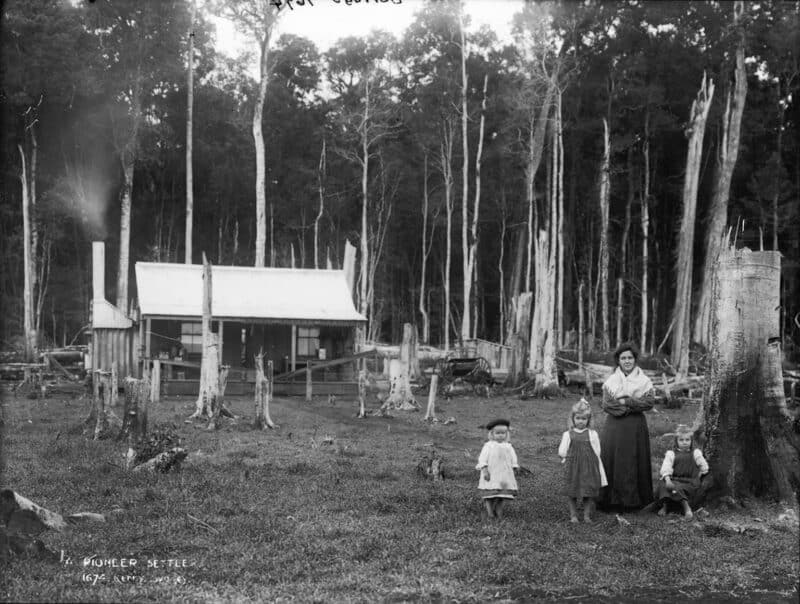
32. Basic Carpentry Skills
Wood was an essential commodity for the pioneers. Handling wood demands even today people with experience and attention to detail. Preparing, cutting, and joining wood is complex, not to mention it can sometimes lead to bloddy accidents.
Usable wood needed to be cut from logs that had been felled. With few metal fasteners such as nails or screws, they would need to join wood using special cuts that enabled the wood to be fixed firmly together. They would also use wooden pins to make items extra sturdy.
The pioneers would have used these skills to build their houses, barns, and other buildings on their land. Believe it or not, many of these buildings are still standing today – a testament to their hard, skillful work.
33. Masonry and Stone Construction
Although wood is the most common construction material, some fortunate pioneers found that they had a good supply of natural rock.
Although a difficult medium to work with, a house constructed from both wood and stone will last for years – much longer than one constructed from wood alone.
Most stone or rock would be constructed using a basic type of mortar that although simple was strong, easy to work with, and did the job.
34. First Aid
The homestead life is sometimes sovershadowed by accidents. Animals, tools, lifting heavy weights – all of these necessary tasks and entities supply opportunities for personal injury.
Living in remote locations makes it vital to know how to deal with injuries when they happen. Medical help, if it’s even available, will be a long way away.
Knowing how to deal with an injury rapidly and effectively was essential for those living in this hazardous environment. A simple cut or an animal bite can become serious if not treated quickly and correctly.
35. Repelling Insects
Insects can be really annoying. They pester and bite us when we are working outside and will even invade our houses.
Even worse, some insects can destroy entire crops if given the opportunity. Without commercially manufactured products like deet, the pioneers found the skills of using natural plants and other techniques to repel insects essential.
Most pioneers would have relied on plants to repel insects. This geranium plant, for instance, smells of citronella, which mosquitos really don’t like. Similar plants and homemade products can help to ward off insects.
36. Pest Control
Rodents are a problem for anyone who is growing and storing crops. Since the pioneers depended on these crops for their survival it was essential for them to be able to control these pests.
Not only that, but rodents are infamous for spreading disease, another reason why the pioneers would have wanted to keep them away.
Physical barriers in addition to homemade products could help to keep rodents away from food-growing areas.
Food storage areas could be a bit more complex to keep rodents away from. Creating strong storage containers would help but they needed to be checked regularly as rodents can be persistent.
Some wild animals can also help to keep rodent populations down. It is tempting to kill a snake if it has been seen close to a house. However, most snakes will hunt and eat rodents and act as a deterrent.
37. Firearm Use and Maintenance
Guns were an essential tool for the pioneers. They allowed them to be able to protect themselves and gave them the ability to hunt for food.
They needed to be skillful at looking after these weapons. The skill of regular maintenance and simple repairs would be essential. A misfiring gun could, at best, cause a pioneer to miss a shot at an animal and at worst, accidentally hurt someone.
Using a firearm effectively and safely also requires significant skills. The pioneers needed to be sure if they were confronted by a dangerous animal that they had the skill to use their firearm effectively.
A great deal of time would have been spent hunting animals for food. Without firearm skills, they
could not be assured that they could successfully kill their prey.
38. Using a Knife
A knife was an important daily tool for the pioneers, as it was used in a myriad of ways, from butchering animals to digging holes, making yur way through dense bush, eating, and much more.
For example, knife skills are essential in the kitchen as proficient users will be able to cope with food preparation without putting their safety at risk.
39. Tool Sharpening and Maintenance
The pioneer would have used many sharp tools besides knives, such as axes and saws. They needed to have the skill to keep these sharp.
Any blunt tool is difficult to use and can be dangerous. It is easier to cause a serious injury with a blunt knife rather than a sharp one.
40. Knot Tying
A rope would have been an important tool for the pioneers. It was used to secure animals, and tarps to wagons to name just a few.
However, a rope is only effective if it can be secured by a good knot. A pioneer would have had the skill of recognizing which of the many knots to use for a particular task.
41. Bartering and Trading
A pioneer’s life was at times a solitary existence. No matter how skilled a pioneer was, he would have not been able to rely solely on his own ingenuity and productivity to survive.
As much as this lifestyle relies on self-sufficiency, there are times when it is useful to be able to trade resources with other like-minded individuals. It is not always possible to grow everything we need or to have all the skills necessary.
Both products and skills could have been bartered and traded.
A pioneer would need good bartering skills to ensure that he was getting value in the trade – as with modern-day trades, there were often many who would try to take advantage of others.
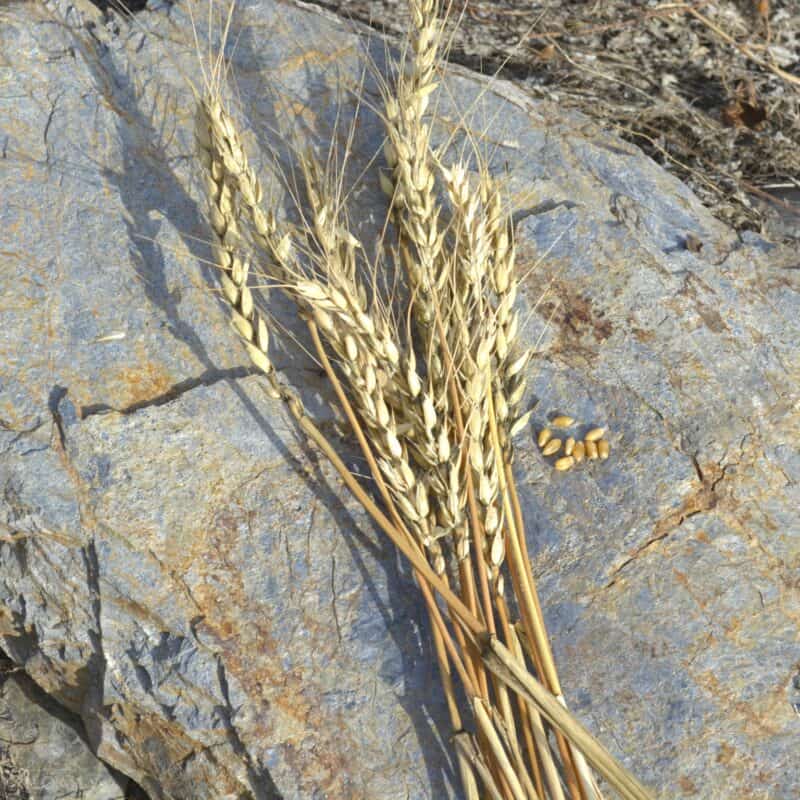
42. Grinding Wheat and Other Grains
Grinding wheat and other types of grains is a skill that has been necessary for countless generations. As such, the pioneers needed to have the skill of grinding wheat and other grains in order to meet their demands for flour.
Grinding grain is a laborious task, especially when you consider that the pioneers would have done this using mortars or stones known as “quem.” All of this work would have been done by hand.
Over time, the demand for more flour led to the creation of flour mills that were operated by wind or water, but most of the pioneers had to mill flour by hand.
Wrap-Up
With perseverance, the correct attitude, and skill, many of the pioneers were able to create a quality life for themselves and their families.
In many ways, the pioneer’s and today’s homesteader choices of lifestyle are similar. Reliance on the natural environment that is all around us and having the skills to utilize those resources would have been essential for survival.
Homesteaders today have many more choices and resources available to them than the early pioneers had – however, the majority prefer to lead a simple life using the same natural resources available to them.
Many of the skills that were used back then are the same skills that are essential for a homestead to survive.
To create this lifestyle many find that these pioneer skills are still relevant and useful today. Which of these skills are you looking to learn or improve in the near future?
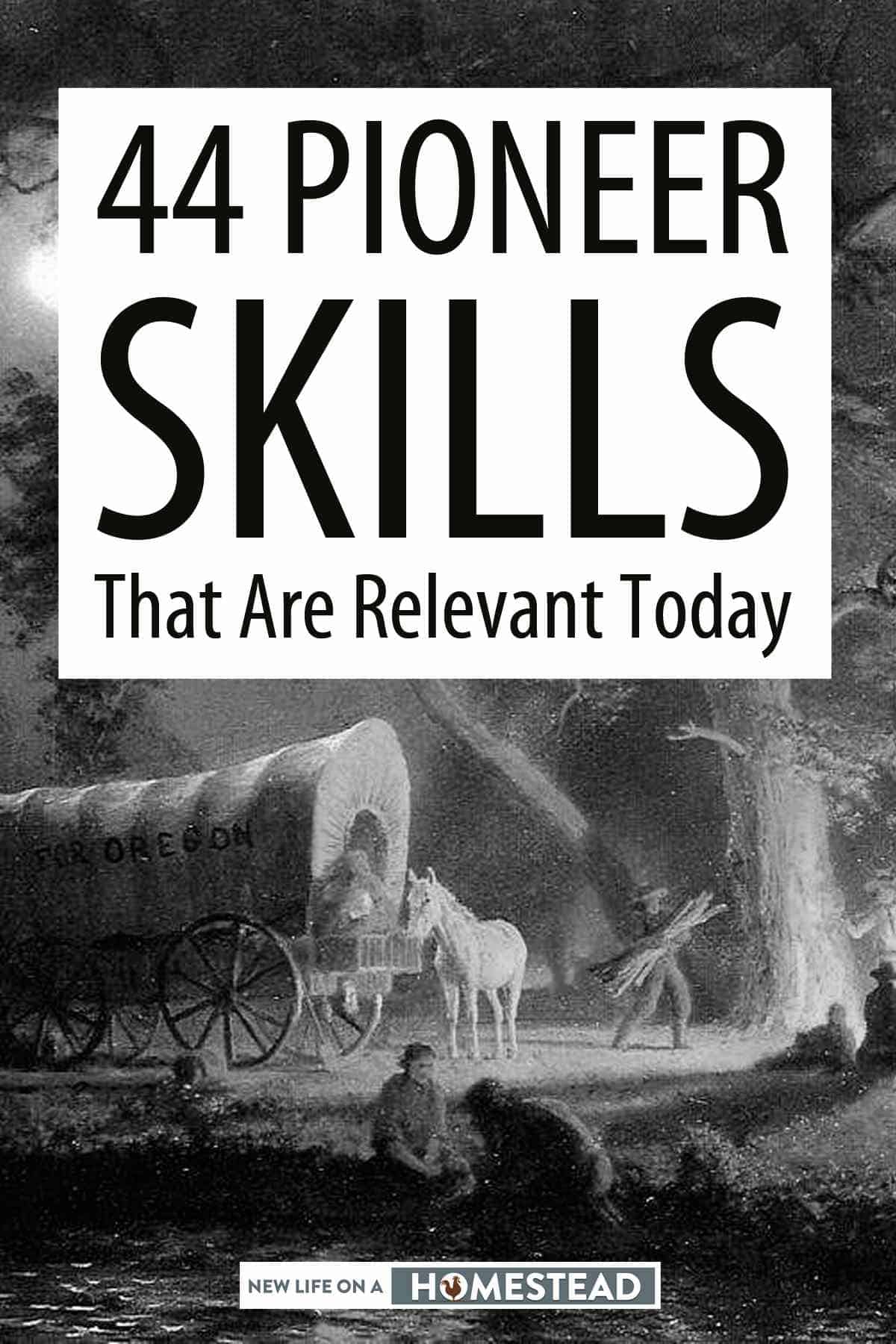

Gordon is a British homesteader established in Spain, growing large amounts of veggies and fruits. He also has a high degree of self-sufficiency as he is procuring his own water, wood, and solar energy.

So happy I found your blog. Great article and easy instructions. Ty!